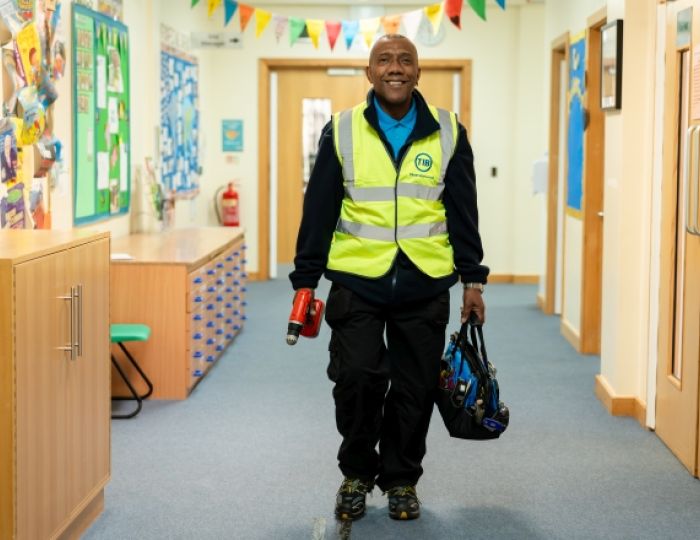Before she retired, my mother, Sue, had been a teacher for 30 years. Not long after, she started experiencing spells where she’d feel slightly breathless.
When she found a lump on her chest, we steeled ourselves for what we thought would be a breast cancer diagnosis. After much of to-ing and fro-ing – her condition seemed beyond the expertise of hospitals local to her – the diagnosis came back in September 2014. Mesothelioma.
At that time I’d barely heard of asbestos. It was one of those things from the past you’d hear people talk about – asbestos in buildings now seen as the danger it was all along, like smoking. She was stage 4, for which there’s no cure. It was just a question of time.
It’s a horrible disease – but what upset her the most was the thought of all those classrooms she’d taught in, and how she hadn’t been able to protect her students. No one had told her that there was asbestos in her workplace, and the notion that the children might have been affected caused her enormous distress. That compelled me to find out if what happened to mum was simply an awful one-off – but the more I looked, the more I came to see just how widespread the problem is.
A pervasive problem
My daughter was six when mum died. She’s now eight, and has just started at a primary school housed in an old Victorian building. I discovered, after writing to the school, that asbestos had been present in the building at one time, having been used for fire doors and classroom partitions. Fortunately, it had been possible to remove the asbestos that was installed, but there are countless schools where the asbestos risks are far higher.
I then wrote to our LA, and it seems that asbestos in schools is a pervasive problem in our local area. That prompted me to start sending out a series of Freedom of Information requests and find out as much about the issue as I could. There are many, many parents out there who, as was the case with me, don’t know anything at all about the asbestos problem, but it’s so important that they do – particularly with schools built in the 60s and 70s.
These are schools that were often designed as temporary structures with short lifespans in mind, but there are many still in use. Asbestos material can be found embedded throughout the infrastructure of these buildings, making it very difficult to remove. The Health and Safety Executive advises that as long as asbestos isn’t damaged or disturbed, it doesn’t pose a significant health risk to teachers and pupils – but as some unions have pointed out, all it takes for asbestos to be disturbed is for those schools to suffer some form of minor damage, such as a water leak.
There was one recent case of a school in the north east, where asbestos was present in the roof of the gym. When the wind blew hard enough, it would lift the ceiling tiles and cause dust from the asbestos insulation behind those tiles to fall down into the space below. The situation was deemed serious enough to require multiple visits by asbestos decontamination units. The headteacher of the school is on record in a 2017 Public Accounts Committee report as saying there were multiple instances when the school had to be closed, with students needing ‘defumigation treatment’ after being exposed to asbestos dust.
Phased removal
The DfE’s latest response to the asbestos issue has been to carry out the Asbestos Management Assurance Process (AMAP) – an online survey launched in 2018 which asked schools to provide written assurances that they were compliant with existing asbestos management legislation.
However, participation in the AMAP wasn’t made mandatory. It was intended to run for three months, but the deadline had to to be extended three times due to the poor response rate it received. The AMAP officially concluded in February this year, but it took until July for the DfE to report its findings (see ‘The AMAP report’).
Even then, the information released by the DfE is aggregated at a national level. The acknowledgement of those schools taking part doesn’t state whether these schools do or don’t contain asbestos, and the 12% that didn’t respond to the survey haven’t been identified. The DfE’s justification for not releasing direct information about individual schools is that doing so will lead to fewer schools responding to such surveys in future.
However, we know from work previously carried out by the NEU that only around 50% of teachers are aware of whether or not their school contains asbestos. We also know that the most effective way of keeping people safe in the presence of asbestos is to be transparent about where it is, so that people can avoid disturbing it.
This isn’t about singling out individual schools and spreading anxiety, but about communicating the scale of the problem and making the case for a centrally funded, phased removal programme. It’s an issue that should involve everyone, particularly those bodies – the LAs, the MATs – that have a responsibility for school buildings, but have been poor at sharing information about asbestos. While everyone’s passing the buck, the asbestos that’s there is continuing to age and degrade.
In the FoI responses I’ve received since 2016, I’ve seen LAs stating that they’ve devolved all responsibilities for monitoring asbestos presence to individual schools, but that’s not good enough. Schools need backup – an additional tier at the responsible body, with a duty for co-ordinating and storing asbestos data, and better support in helping them understand what constitutes a good asbestos survey.
At a time when there’s a real shortage of money, it’s an expensive problem – surveys by qualified and registered professionals are costly. There’s the risk that schools wanting to follow procedures, but which have to economise, won’t receive reliable data. There’s now less money to tackle asbestos in schools than there was when my mother was alive. Staff and parents can see that schools are crumbling around them, which is just making the problem even worse.
Reporting obligations
For the past 30 years in the US, schools containing asbestos have produced written reports detailing where their asbestos is, how it’s being managed and what their future plans consist of. The process has kept the issue live in the minds of teaching staff and those with responsibility for managing it, while at the same time raising awareness among parents and children, which is why I’m petitioning for similar reporting obligations on schools in England.
I’m also seeking crowdfunding for a website that will enable teachers and parents to check conclusively whether their school or any others in their local area contain asbestos. The reality is that the majority of schools are trying to tackle the problem as best as they can – but if you’re the only school in your area talking publicly about the asbestos management you’re doing, you run the risk of being defined by it due to people’s lack of knowledge over how widespread the problem is.
A report from the All-Party Parliamentary Group on Occupational Health and Safety found that a five-year-old is five times more at risk of developing mesothelioma than a 30-year-old , yet ‘acceptable’ levels of asbestos exposure in schools are set at adult levels. It’s a ticking time bomb – in 40 to 50 years time, we’ll see the true consequences of the delays and lack of action so far.
The AMAP report
Key findings from the DfE’s Asbestos Management Assurance Process
• 19,522 schools in England (88.4%) ultimately submitted their data ato the AMAP
• 80.9% of participating schools reported that asbestos was present on their estates
• 17.7% of participating schools were found to be compliant with the law, but pursuing asbestos-related practice not in line with DfE guidance
• 98.9% reported taking professional advice in relation to asbestos management
• 95.4% of schools with asbestos present have an asbestos management plan in place
• 93.6% have assessed the potential risk from Asbestos-Containing materials










